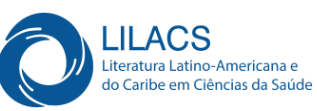Aggressiveness and intelligence in adolescence
DOI:
https://doi.org/10.5433/2236-6407.2012v3n2p215Keywords:
adolescence, cognitive development, social interactionAbstract
This study aimed to analyse the aggressiveness and intelligence in adolescence, and to verify if exists association through these variables. The aggressiveness is inherent in human nature and collaborates in the construction of personality by influencing the behaviors positively or negatively. Intelligence refers to the cognitive skill that every individual has and contributes to the establishment of social relations. As a teenager the aggressiveness and the intelligence become more evident due to change in this phase of development. The sample of 35 adolescents of both sexes participated in this survey. The instruments used were the batch of reasoning tests - BPR-5 and the Aggressiveness scale for children and young people. The results indicated that there is no relationship between aggression and intelligence. However, based on the literature these variables interrelate. Therefore, it is suggested that this research be expanded with the use of other psychological instruments.Downloads
References
Almeida, L. S., & Primi, R. (2004). Perfis de capacidades cognitivas na bateria de provas de raciocínio (BPR-5). Psicologia Escolar e Educacional, 8(2), 135- 144.
Almeida, L. S., Lemos, G., Guisande, M. A., & Primi, R. (2008). Inteligência, escolarização e idade: Normas por idade ou série escolar? Avaliação Psicológica, 7(2), 117-125.
Anastasi, A., & Urbina, S. (2000). Testagem psicológica. Porto Alegre: Artes Médicas.
Atkinson, R. L., Atkinson. R. C, Smith, E. E., Bem, D. J., & Nolem-Hoehsema, S. (2002). Introdução à Psicologia de Hilgard. Porto Alegre: Artmed.
Bierman, K. L., Smoot, D. L., & Aumiller, K. (1993). Characteristics of aggressive-rejected, aggressive (nonrejected), and rejected (nonaggressive) boys. Child Development, 64, 139-151.
Coelho, L. M. S. (1980). Epilepsia e personalidade. (2ª ed.). São Paulo: Ática. Dalgalorrondo, P. (2008). Psicopatologia e semiologia dos transtornos mentais. (2ª ed.). Porto Alegre: Artmed.
Dias, E. O. (2000). Winnicott: Agressividade e teoria do amadurecimento. Natureza Humana, 2(1), 9-48.
Erickson, E. (1998). O ciclo de vida completo. Porto Alegre: Artes Médicas. Freud, S. (1930). O mal-estar na civilização. In: Obras Completas, (vol. XXI). Standard Brasileira. Rio de Janeiro: Imago: (1996).
Galvão, I. (1995). Henry Wallon: uma concepção dialética do desenvolvimento infantil. Rio de Janeiro: Editora Vozes.
Gonçalves, A. C. F. (2001). Conflitos de relacionamento entre pais e filhos: adolescentes no contexto familiar. Trabalho de Conclusão de Curso em Serviço Social, Universidade da Amazônia.
Guimarães, N. M., & Pasian, S. R. (2006). Agressividade na adolescência: experiência e expressão da raiva. Psicologia em Estudo, 11(1), 89-97.
Hall, C. S., Lindzey, G., & Campbell, J. B. (2000). Teorias da personalidade. Porto Alegre: Artmed.
Keppe, R. L. D. (2005). Tendência anti-social: A compreensão dos pais sobre a agressividade dos filhos. São Paulo: Centro Universitário Paulistano.
Joly, M. C. R. A., Dias, A. S., & Marini, J. A. S. (2009). Avaliação da agressividade na família e escola de ensino fundamental. Psico-USF, 14(1) 83-93.
Oliveira, K. S. (2006). Avaliação do exame nacional de desempenho do estudante pela teoria de resposta ao item. Dissertação de Mestrado em Psicologia, Universidade São Francisco, Itatiba.
Oliveira, D. M. (2009). Contribuições para o estudo da adolescência sob a ótica de winnicott para a educação. Dissertação de Mestrado em Psicologia, Pontifícia Universidade Católica, Campinas.
Papalia, D. E., & Olds, S. W. (2000). Desenvolvimento humano. (7ª ed.). Porto Alegre: Artemed.
Pasquali, L. (2003). Psicometria: teoria dos testes na psicologia e na educação. in Chiodi, M. G. (2007). Escala de inteligência weschesler para crianças e bateria de habilidades cognitivas Woodcok Johson-III: Comparação de instrumentos. Dissertação de Mestrado. Pontifícia Universidade Católica de Campinas.
Primi, R., & Almeida, L. S. (2000). BPR-5: Bateria de provas de raciocínio: Manual técnico. São Paulo: Casa do Psicólogo.
Pródocimo, E., & Recco, K. V. (2008). Recreio escolar: Uma análise quantitativa sobre a agressividade entre os estudantes de ensino fundamental I. In: Congresso Nacional de Educação - Educere Educação Internacional. Curitiba: Champagnat, p. 10565-10575.
Sisto, F. F., & Bazi, G. A. P. (2000). Escala de agressividade para crianças e jovens. Faculdade de Educação. Campinas: Universidade Estadual de Campinas.
Sisto, F. F. (2005). Aceitação-rejeição para estudar a agressividade na escola. Psicologia em Estudo, 10(1), 117-125.
Sisto, F. F., & Oliveira, A. F. (2007). Traços de personalidade e agressividade: Um estudo de evidência de validade. Revista de Psicologia, 8(1), 89-99.
Spielberger, C. D. (1992). Inventário de Expressão de Raiva como Estado e Traço (S.T.A.X.I): Manual Técnico. Porto Alegre: Vetor.
Sternberg, R. J. (2000). Psicologia Cognitiva. Porto Alegre: Artes Médicas Sul. Winnicott, D. W. (1975). O brincar e a realidade. Rio de Janeiro: Imago.
Winnicott, D. W. (1987). Privação e delinquência. São Paulo: Martins Fontes. Winnicott, D. W. (2000). Da pediatria a psicanálise. Rio de Janeiro: Imago.
Downloads
Published
How to Cite
Issue
Section
License
Copyright (c) 2012 Estudos Interdisciplinares em Psicologia

This work is licensed under a Creative Commons Attribution 4.0 International License.
The Copyright of the published manuscripts belongs to the Journal. Since they are published in an open access Journal, they are freely available, for private use or for use for educational and non-commercial purposes.
The Journal has the right to make, in the original document, changes regarding linguistic norms, orthography, and grammar, with the purpose of ensuring the standard norms of the language and the credibility of the Journal. It will, however, respect the writing style of the authors.
When necessary, conceptual changes, corrections, or suggestions will be forwarded to the authors. In such cases, the manuscript shall be subjected to a new evaluation after revision.
Responsibility for the opinions expressed in the manuscripts lies entirely with the authors.



















